Recent Publications (2011 to Present)
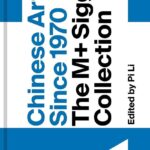 Pi Li, ed., Chinese Art Since 1970: The M+ Sigg Collection, Thames and Hudson, 2021
Pi Li, ed., Chinese Art Since 1970: The M+ Sigg Collection, Thames and Hudson, 2021
Published to coincide with the presentation of the M+ Sigg Collection at the opening of the M+ building, Chinese Art Since 1970 features more than 600 works by more than 300 artists represented by the collection, among them Ai Weiwei, Cao Fei and Geng Jianyi. After introductory essays by Pi Li and Uli Sigg, an illustrated chronology spanning the years 1972 to 2020 highlights important social events, exhibitions and artistic movements to establish a context for the discussion of the featured artists and their work that follows. Punctuating this discussion are contributions from renowned art historians, curators and critics from across the globe on specific works and practices, together with in-depth explanations of key concepts and events, from Cynical Realism to the seminal exhibition China/Avant-Garde. Through the medium of the world’s pre-eminent collection of contemporary Chinese art, Chinese Art Since 1970 offers an unparalleled introduction to one of the most culturally dynamic periods in modern Chinese history. (Description from rom Amazon.com website)
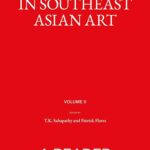 T.K. Sabapathy and Patrick Flores, eds., The Modern in Southeast Asian Art: A Reader (two volumes), National Gallery Singapore, 2023
T.K. Sabapathy and Patrick Flores, eds., The Modern in Southeast Asian Art: A Reader (two volumes), National Gallery Singapore, 2023
Who spoke of the modern in Southeast Asia? When and where was the modern written? How was it written? How was it received? This collection brings together nearly 300 texts that were originally published between the late 19th to late 20th centuries, selected by a group of scholars as responses to questions such as these. The texts were produced chiefly in various locations in the region, by artists, critics, historians and curators in 13 languages, many of which had never before been translated into the English language. Years in the making, this publication is the first to present such breadth and depth of art writing in the region of Southeast Asia, and will be a valuable resource to students, teachers, scholars and those interested in Southeast Asian studies and art history. (Description from Amazon.sg website)
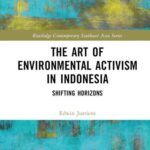 Edwin Jurriens, The Art of Environmental Activism in IndonesiaShifting Horizons, Routledge, 2023
Edwin Jurriens, The Art of Environmental Activism in IndonesiaShifting Horizons, Routledge, 2023
This book analyses the intersections between contemporary art and environmental activism in Indonesia. Exploring how the arts have promoted ecological awareness from the late 1960s to the early 2020s, the book shows how the arts have contributed to societal change and public and political responses to environmental crises. This period covers Indonesia’s rapid urban development under the totalitarian New Order regime (1967–1998) as well as the enhanced freedom of expression, alternative development models, and environmental problems under the democratic governments since 1998. The book applies the concept of ‘artivism’ to refer to the vital role of art in activism. It seeks to identify and contextualise both the potential and limits of environmental artivism in Indonesia, a country whose vibrant art scenes and monumental social transformations provide a productive laboratory for exploring the power of creativity as a social and political change agent. It provides a comprehensive overview of contemporary art from Indonesia, with an in-depth analysis of artivists who seek to address and find solutions for some of the most pressing environmental issues of our times. (Description from publisher’s website)
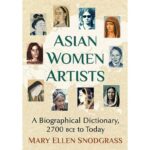 Mary Ellen Snodgrass, Asian Women Artists: A Biographical Dictionary, 2700 BCE to Today, 2022
Mary Ellen Snodgrass, Asian Women Artists: A Biographical Dictionary, 2700 BCE to Today, 2022
A guide to identifying female creators and artistic movements from all parts of Asia, offering a broad spectrum of media and presentation representing a wide variety of milieus, regions, peoples and genres. Arranged chronologically by artist’s birth date, entries date as far back as 2700 BCE and continue to March 2021. (Description from Amazon.com website)
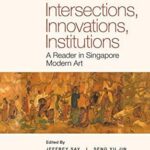 Jeffrey Say and Seng Yu Jin, eds., Intersections, Innovations, Institutions: A Reader in Singapore Modern Art, World Scientific, 2023
Jeffrey Say and Seng Yu Jin, eds., Intersections, Innovations, Institutions: A Reader in Singapore Modern Art, World Scientific, 2023
Intersections, Innovations, Institutions: A Reader in Singapore Modern Art is the second of two volumes of readers which the editors had published on Singapore art. The first volume, Histories, Practices, Interventions: A Reader in Singapore Contemporary Art, was published in 2016. Like the first volume, Intersections, Innovations, Institutions brings together historically important writings but the scope is on modern artistic practices in Singapore from the 19th century to the 1980s. The aim of this book is to make these writings accessible for research and scholarship and for new histories and narratives to be constructed about the modern in Singapore art. (from the publisher’s website)
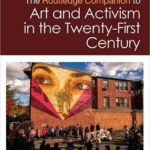 Lesley Shipley and Mey-Yen Moriuchi, eds., The Routledge Companion to Art and Activisim in the Twenty-First Century, 2023
Lesley Shipley and Mey-Yen Moriuchi, eds., The Routledge Companion to Art and Activisim in the Twenty-First Century, 2023
The Routledge Companion to Art and Activism in the Twenty-First Century brings together a wide range of geographical, cultural, historical, and conceptual perspectives in a single volume of new essays that facilitate a deeper understanding of the field of art activism as it stands today and as it looks towards the future. The book is a resource for multiple fields, including art activism, socially engaged art, and contemporary art, that represent the depth and breadth of contemporary activist art worldwide. Contributors highlight predominant lines of inquiry, uncover challenges faced by scholars and practitioners of activist art, and facilitate dialogue that might lead to new directions for research and practice. (from Amazon.com website)
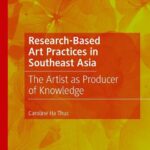 Caroline Ha Thuc, Research-Based Practices in Southeast Asia: The Artist as Producer of Knowledge, Palgrave MacMillan, 2022
Caroline Ha Thuc, Research-Based Practices in Southeast Asia: The Artist as Producer of Knowledge, Palgrave MacMillan, 2022
This book is the first overall study of research-based art practices in Southeast Asia. Its objective is to examine the creative and mutual entanglement of academic and artistic research; in short, the Why, When, What and How of research-based art practices in the region. In Southeast Asia, artists are increasingly engaged in research-based art practices involving academic research processes. They work as historians, archivists, archaeologists or sociologists in order to produce knowledge and/or to challenge the current established systems of knowledge production. As artists, they can freely draw on academic research methodologies and, at the same time, question or divert them for their own artistic purpose. The outcome of their research findings is exhibited as an artwork and is not published or presented in an academic format. This book seeks to demonstrate the emancipatory dimension of these practices, which contribute to opening up our conceptions of knowledge and of art, bestowing a new and promising role to the artists within the society. (from Springer Professional website)
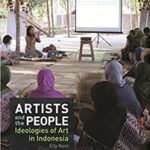 Elly Kent, Artists and the People: Ideologies of Art in Indonesia, National University of Singapore Press, 2022
Elly Kent, Artists and the People: Ideologies of Art in Indonesia, National University of Singapore Press, 2022
Exploring the work of established and emerging artists in Indonesia’s vibrant art world, this book examines why so many artists in the world’s largest archipelagic nation choose to work directly with people in their art practices. While the social dimension of Indonesian art makes it distinctive in the globalized world of contemporary art, Elly Kent is the first to explore this engagement in Indonesian terms. What are the historical, political, and social conditions that lie beneath these polyvalent practices? How do formal and informal institutions, communities, and artist-run initiatives contribute to the practices and discourses behind socially engaged art in Indonesia? Drawing on interviews with artists, translations of archival material, visual analyses, and participation in artists’ projects, this book presents a unique, interdisciplinary examination of ideologies of art in Indonesia. (Description from The University of Chicago Press website)
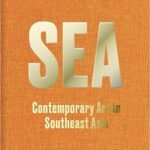 Ute Meta Bauer, Karin G. Oen, and Boon Hui Tan, eds., SEA: Contemporary Art in Southeast Asia , Weiss Publications, 2022
Ute Meta Bauer, Karin G. Oen, and Boon Hui Tan, eds., SEA: Contemporary Art in Southeast Asia , Weiss Publications, 2022
A beautifully illustrated, clothbound compendium presenting significant contemporary art in Southeast Asia, SEA: Contemporary Art in Southeast Asia highlights the dynamic nature of contemporary art in Southeast Asia across generations and borders. This publication provides a unique and timely opportunity to introduce a broad audience to the artistic practices of Southeast Asia as they are connected to major themes of interest, such as community engagement and organization, social and political commentary, gender and identity, environment and ecology, and material traditions and processes. (Description from the publisher’s website)
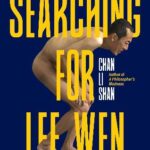 Chan Li Shan, Searching for Lee Wen: A Life in 135 Parts, Epigram Books, 2022
Chan Li Shan, Searching for Lee Wen: A Life in 135 Parts, Epigram Books, 2022
Writer, biographer and mental health advocate, Chan Li Shan, takes us on a path of discovery, while painting a vivid and searingly honest picture of a man many knew of, but few really knew. Along the way, she learns about art and friendship. (Description from the publisher’s website)
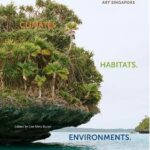 Ute Meta Bauer, Climates.Habitats.Environments., MIT Press and NTU Contemporary Centre for the Arts, 2022
Ute Meta Bauer, Climates.Habitats.Environments., MIT Press and NTU Contemporary Centre for the Arts, 2022
Modeling the curatorial as a method for uniting cultural production and science, Climates. Habitats. Environments. weaves together image and text to address the global climate crisis. Through exhibitions, artworks, and essays, artists and writers transcend disciplinary boundaries and linear histories to bring their knowledge and experience to bear on the fight for environmental justice. In doing so, they draw on the rich cultural heritage of the Asia-Pacific, in conversation with international discourse, to demonstrate transdisciplinary solution-seeking. The works of art, the projects, and the majority of the texts featured in the book were commissioned by NTU Centre for Contemporary Art Singapore. (Description from MIT Press website)
 Viet Le, Return Engagements: Contemporary Art’s Traumas of Modernity and History in Sài Gòn and Phnom Penh, Duke University Press Books, 2021
Viet Le, Return Engagements: Contemporary Art’s Traumas of Modernity and History in Sài Gòn and Phnom Penh, Duke University Press Books, 2021
In Return Engagements artist and critic Việt Lê examines contemporary art in Cambodia and Việt Nam to rethink the entwinement of militarization, trauma, diaspora, and modernity in Southeast Asian art. Highlighting artists tied to Phnom Penh and Sài Gòn and drawing on a range of visual art as well as documentary and experimental films, Lê points out that artists of Southeast Asian descent are often expected to address the twin traumas of armed conflict and modernization, and shows how desirable art on these themes is on international art markets. As the global art market fetishizes trauma and violence, artists strategically align their work with those tropes in ways that Lê suggests allow them to reinvent such aesthetics and discursive spaces. By returning to and refashioning these themes, artists such as Tiffany Chung, Rithy Panh, and Sopheap Pich challenge categorizations of “diasporic” and “local” by situating themselves as insiders and outsiders relative to Cambodia and Việt Nam. By doing so, they disrupt dominant understandings of place, time, and belonging in contemporary art. (Description from Amazon.com)
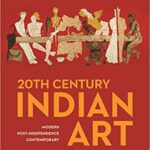 Partha Mitter, Parul Dave Mukherji and Rakhee Balaram, eds., 20th Century Indian Art: Modern, Post- Independence, Contemporary, Thames and Hudson, 2022
Partha Mitter, Parul Dave Mukherji and Rakhee Balaram, eds., 20th Century Indian Art: Modern, Post- Independence, Contemporary, Thames and Hudson, 2022
This landmark collection presents a new history of Indian art from the twentieth century to the present day. Recent decades have seen an overdue interest in the acquisition and exhibition of modern Indian and South Asian art and artists by major international museums. This essential, lavishly illustrated volume presents an engaging, informative history of modern art from the subcontinent as seen through the eyes of prominent Indian art historians. Together with lively expert discussions and a selection of absorbing interviews with artists, 20th Century Indian Art meets a clear demand for a comprehensive and authoritative sourcebook on modern, postmodern, and contemporary Indian art. This is the definitive reference for anyone with an interest in Indian art and non-Western art histories. (Description from Amazon.com)
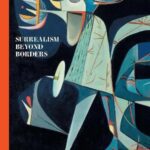 Stephanie D’Alessandro and Matthew Gale, eds, Surrealism Beyond Borders, Metropolitan Museum of Art, 2021
Stephanie D’Alessandro and Matthew Gale, eds, Surrealism Beyond Borders, Metropolitan Museum of Art, 2021
This groundbreaking book challenges conventional narratives of Surrealism, tracing its impact and legacy from the 1920s to the late 1970s in places as diverse as Colombia, Czechoslovakia, Egypt, Japan, Mexico, the Philippines, Romania, Syria, Thailand, and Turkey. In doing so, it presents a more inclusive and accurate understanding of the fundamentally international character and lasting significance of the revolutionary artistic, literary, and philosophical movement. Vibrantly illustrated with more than 300 works of art by both well-known figures—including Dalí, Ernst, Kahlo, Magritte, and Miró—and numerous underrepresented artists, this expansive book pushes beyond the borders of history, geography, and nationality to provocatively redraw the map of the Surrealist movement, investigating how its visual languages, ideals, theories, and practices were framed or reframed in contexts far from its Parisian origins. Contributions from more than 40 distinguished international scholars explore themes such as the channels used to transmit ideas; artists’ responses to the challenges of political oppression, social unrest, and the effects of colonialism; and experiences of displacement and exile in the twentieth century. (Description from Amazon.com)
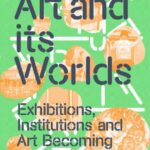 Silvia Rivera Cusicanqu et. al., Art and its Worlds: Exhibitions, Institutions and Art Becoming Public, Walther König, Köln/Afterall Books, 2021
Silvia Rivera Cusicanqu et. al., Art and its Worlds: Exhibitions, Institutions and Art Becoming Public, Walther König, Köln/Afterall Books, 2021
This critical anthology explores the myriad histories and worlds through which art is produced and experienced. It is guided by the following questions: How are the “global” and the “located” shaped and understood in disparate contexts and times? How have artists experimented with modes of exhibition-making and public presentation? Key essays previously published by Afterall are included alongside new image-led presentations, translated material and commissioned texts. The anthology addresses the topic in both theoretical terms and through case studies. (Description from Amazon.com)
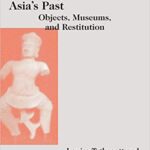 Louise Tythacott and Panggah Ardiyansyah, Returning Southeast Asia’s Past: Objects, Museums, and Restitution (Art and Archaeology of Southeast Asia: Hindu-Buddhist Traditions), National University of Singapore Press, 2021
Louise Tythacott and Panggah Ardiyansyah, Returning Southeast Asia’s Past: Objects, Museums, and Restitution (Art and Archaeology of Southeast Asia: Hindu-Buddhist Traditions), National University of Singapore Press, 2021
For the past century and a half, extensive looting and illicit trafficking of Southeast Asia’s cultural heritage have scattered art objects from the region to museums and private collections around the world. Today, however, power relations are shifting, a new awareness is growing, and new questions are emerging about the representation and ownership of Southeast Asian cultural material located in the West. This book offers a timely consideration of object restitution and related issues across Southeast Asia, bringing together a range of viewpoints, including those of museum professionals and scholars in Cambodia, Thailand, Vietnam, and Indonesia, as well as Europe, North America, and Australia. The contributors address legal, cultural, political and diplomatic issues involved in the restitution process, and they also look at the ways object restitution is integral to evolving narratives of national identity. Ultimately, the book’s editors conclude, restitution processes can transform narratives of loss into opportunities for gain, building knowledge and reconstructing relationships across national borders. (Description from Amazon.com)
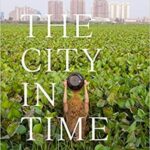 Pamela Corey, The City in Time: Contemporary Art and Urban Form in Vietnam and Cambodia, University of Washington Press, 2021
Pamela Corey, The City in Time: Contemporary Art and Urban Form in Vietnam and Cambodia, University of Washington Press, 2021
In The City in Time, Pamela N. Corey provides new ways of understanding contemporary artistic practices in a region that continues to linger in international perceptions as perpetually “postwar.” Focusing on art from the last two decades, Corey connects artistic developments with social transformations as reflected through the urban landscapes of Ho Chi Minh City and Phnom Penh. As she argues, artists’ engagements with urban space and form reveal ways of grasping multiple and layered senses and concepts of time, whether aligned with colonialism, postcolonial modernity, communism, or post-socialism.
The City in Time traces the process through which collective memory and aspiration are mapped onto landscape and built space to shed light on how these vibrant Southeast Asian cities shape artistic practices as the art simultaneously consolidates the city as image and imaginary. Featuring a dynamic array of creative productions that include staged and documentary photography, the moving image, and public performance and installation, The City in Time illustrates how artists from Vietnam and Cambodia have envisioned their rapidly changing worlds. (Description from Amazon.com website)
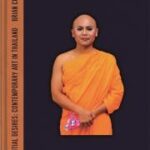 Brian Curtin, Essential Desires: Contemporary Art in Thailand, Reaktion Books, 2021
Brian Curtin, Essential Desires: Contemporary Art in Thailand, Reaktion Books, 2021
Essential Desires: Contemporary Art in Thailand is the first major, fully illustrated survey of Thai art in thirty years. Brian Curtin shows how Thai artists negotiated their emergence on the global art stage while dealing with pan-Asian regionalism and nationalism at home.
This book traces the influences on contemporary Thai artists, from the impact of consumerism in Bangkok in the 1990s to the legacies of tradition, and their relationship to the nation’s often-volatile political stage. Curtin, in his exploration of Thailand’s fascinating art scene, shows how Thai artists are generating new ideas about their country. (Description from publisher’s website)
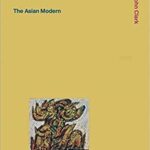
John Clark, The Asian Modern, National Gallery Singapore, 2021
John Clark’s magisterial The Asian Modern reconstructs the notion of art and its historiography. Writing about the history of the Asian modern through the social life of artists, he generates a new paradigm for the narration of art. The Asian Modern meticulously charts his analysis of art in Asia from the 1850s to the present day, and is an invaluable resource for the scholar and layman alike. (Description from Amazon.com website)
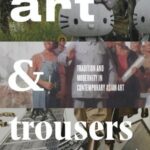 David Elliott, Art & Trousers: Tradition and Modernity in Contemporary Asian Art, NUS Press, 2021
David Elliott, Art & Trousers: Tradition and Modernity in Contemporary Asian Art, NUS Press, 2021
A collection of more than 30 essays, fully illustrated with more than 640 colour images, Art & Trousers moves deftly between regional analysis, portraits of individual artists, and a metaphorical history of trousers, presenting a panoramic view of modern and contemporary Asian art, and focusing on the various impacts of invention, tradition, exchange, colonization, politics, social development, and gender. Elliott spotlights the practice of many leading global artists of the early 21st century, including Hiroshi Sugimoto, Cai Guo-Qiang, Ai Weiwei, Xu Bing, Rashid Rana, Bharti Kher, Makoto Aida, Chatchai Puipia, and Yeesookyung, among many others. Art & Trousers offers insight into the development of a key curatorial practice for our times, and is an essential resource for anyone seeking to understand contemporary art and the way it operates across borders. (Description from publisher’s website)
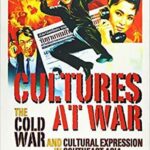 Tony Day and Maya H. T. Liem, eds, Cultures at War: The Cold War and Cultural Expression in Southeast Asia, Cornell University, 2010
Tony Day and Maya H. T. Liem, eds, Cultures at War: The Cold War and Cultural Expression in Southeast Asia, Cornell University, 2010
The Cold War in Southeast Asia was a many-faceted conflict, driven by regional historical imperatives as much as by the contest between global superpowers. The essays in this book offer the most detailed and probing examination to date of the cultural dimension of the Cold War in Southeast Asia. Southeast Asian culture from the late 1940s to the late 1970s was primarily shaped by a long-standing search for national identity and independence, which took place in the context of intense rivalry between the United States and the Soviet Union, with the Peoples’ Republic of China emerging in 1949 as another major international competitor for influence in Southeast Asia. What is common to all of the perspectives and works examined in this book is that they expressed social and aesthetic concerns that both antedated and outlasted the Cold War, ones that never became simply aligned with the ideologies of either bloc. (Description from Amazon.com website)
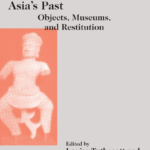 Louise Tythacott and Panggah Ardiyansyah, eds, Returning Southeast Asia’s Past: Objects, Museums, and Restitution, NUS Press 2021
Louise Tythacott and Panggah Ardiyansyah, eds, Returning Southeast Asia’s Past: Objects, Museums, and Restitution, NUS Press 2021
This book is a timely consideration of object restitution and related issues across Southeast Asia, bringing together different viewpoints including from museum professionals and scholars in Cambodia, Thailand, Vietnam and Indonesia – as well as Europe, North America and Australia. The objects themselves are at the centre of most narratives – from Khmer art to the Mandalay regalia (repatriated in 1964), Ban Chiang archaeological material and the paintings of Raden Saleh. Legal, cultural, political and diplomatic issues involved in the restitution process are considered in many of the chapters; others look at the ways object restitution is integral to evolving narratives of national identity. The book’s editors conclude that restitution processes can transform narratives of loss into opportunities for gain in building knowledge and reconstructing relationships across national borders. (Description from publisher’s website)
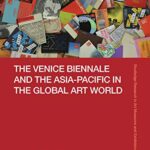 The Venice Biennale and the Asia-Pacific in the Global Art World (Routledge Research in Art Museums and Exhibitions)
The Venice Biennale and the Asia-Pacific in the Global Art World (Routledge Research in Art Museums and Exhibitions)
by Stephen Naylor
This monograph uses the national pavilions of the Venice Biennale as a vehicle to examine the development of international contemporary art trends within the Asia-Pacific region, including Australia, Japan and Korea and 16 additional national entities who have had less continuous participation in this global art event. Analysing both the spatial and visual representation of contemporary art presented at the Venice Biennale and incorporating the politics behind national selections, this monograph provides insights into a range of important elements of the global art industry. Areas analysed include national cultural trends and strategies, the inversion of the peripheral to the centre stage of the Biennale, geopolitics in gaining exhibition space at the Venice Biennale, curatorial practices for contemporary art presentation and artistic trends that seek to deal with major economic, cultural, religious and environmental issues emerging from non-European art centres. (from Amazon.com website)
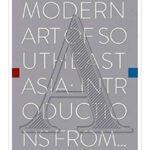 Modern Art of Southeast Asia: Introductions from A to Z 1st Edition
Modern Art of Southeast Asia: Introductions from A to Z 1st Edition
by Roger Nelson
Modern Art of Southeast Asia: Introductions from A to Z features 60 concise and accessibly written accounts of the key ideas and currents underlying modern art in the region. These are accompanied by over 250 beautifully reproduced artworks from the collection of National Gallery Singapore, and other public and private collections in Southeast Asia and beyond. The book offers an informative first encounter with art as well as refreshing perspectives, and is a rewarding resource for students (from Amazon.com website)
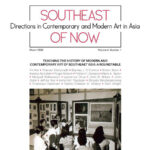 The first issue of the fourth volume features:
The first issue of the fourth volume features:
Articles:
The 1980s as (an Attempt in) the Decolonialization of Malaysian Art
Sarena Abdullah
Neo-Traditional Art of Post-Socialist Laos: The Entangled Temporality of the Mother-Land
Anna Koshcheeva
Critical Recycling: Post-Consumer Waste as Medium and Meaning in Contemporary Indonesian Art
Elly Kent
Roundtable:
Teaching the History of Modern and Contemporary Art of Southeast Asia
Yin Ker, Thanavi Chotpradit, Stanley J. O’Connor, Simon Soon, Sarena Abdullah, Roger Nelson, Patrick F. Campos, Nora A. Taylor, Muliyadi Mahamood, Lawrence Chua, John N. Miksic, John Clark, Jeffrey Say, Imran bin Tajudeen, Eksuda Singhalampong, Chaitanya Sambrani, Basilio Esteban S. Villaruz, Astri Wright
Responses:
Architects in the Eye of the Storm: Reflections on Teaching Southeast Asian Art in a University Museum
Kaja M. Mcgowan
(Im)material Histories and Aesthetics of Extractivism in Vietnamese Artists’ Moving Image
Philippa Lovatt
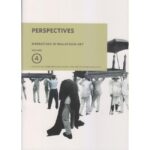 Narratives in Malaysian Art Volume 4: Perspectives
Narratives in Malaysian Art Volume 4: Perspectives
by Nur Hanim Khairuddin (Editor), Beverly Yong (Editor), Yap Sau Bin (Editor), Simon Soon (Editor)
The fourth and final volume of the Narratives in Malaysian Art series, launched in September 2019, considers how we look at Malaysian art, and the forces and motivations that have shaped our understanding of its role and development. Perspectives brings together the voices of members of the public, activists, art workers, critics, curators, academics and artists in a collection of commissioned interviews, conversations, essays and short reflections. It seeks to stimulate alternative ways of thinking about art and its significance in the past, present and future. (description from Goodreads.com)
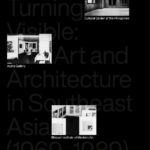 SUDDENLY TURNING VISIBLE: ART AND ARCHITECTURE IN SOUTHEAST ASIA (1969-1989)
SUDDENLY TURNING VISIBLE: ART AND ARCHITECTURE IN SOUTHEAST ASIA (1969-1989)
In 1981, the Filipino artist and curator Raymundo Albano adopted the expression “suddenly turning visible” to describe the rapid transformation of Manila’s urban landscape. The visibility that Albano evoked was aspirational, driven by a desire for rapid economic growth in which art had a critical role. This catalogue traces this story through three influential art institutions: the Cultural Center of the Philippines, the Alpha Gallery in Singapore and the Bhirasri Institute of Modern Art in Bangkok. It presents in rich detail artworks from the period, an anthology of primary documents and interviews with curators, artists and architects, revealing the links between architecture, modern art and the role of institutions in Southeast Asia.
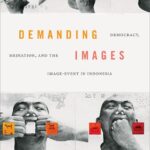 Karen Strassler, Demanding Images: Democracy, Mdeiation and the Image Event in Indonesia, Duke University Press, 2020
Karen Strassler, Demanding Images: Democracy, Mdeiation and the Image Event in Indonesia, Duke University Press, 2020
The end of authoritarian rule in 1998 ushered in an exhilarating but unsettled period of democratization in Indonesia. A more open political climate converged with a rapidly changing media landscape, yielding a vibrant and volatile public sphere within which Indonesians grappled with the possibilities and limits of democracy amid entrenched corruption, state violence, and rising forms of intolerance. In Demanding Images Karen Strassler theorizes image-events as political processes in which publicly circulating images become the material ground of struggles over the nation’s past, present, and future. Considering photographs, posters, contemporary art, graffiti, selfies, memes, and other visual media, she argues that people increasingly engage with politics through acts of making, circulating, manipulating, and scrutinizing images. Demanding Images is both a closely observed account of Indonesia’s turbulent democratic transition and a globally salient analysis of the work of images in the era of digital media and neoliberal democracy. Strassler reveals politics today to be an unruly enterprise profoundly shaped by the affective and evidentiary force of images. (From publisher website)
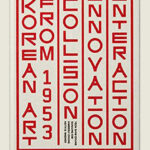 Yeon Shim Chung, Sunjung Kim, Kimberly Chung, Keith B. Wagner, Korean Art from 1953: Collision, Innovation, Interaction, Phaidon, 2020.
Yeon Shim Chung, Sunjung Kim, Kimberly Chung, Keith B. Wagner, Korean Art from 1953: Collision, Innovation, Interaction, Phaidon, 2020.
Starting with the armistice that divided the Korean Peninsula in 1953, this one-of-a-kind book spotlights the artistic movements and collectives that have flourished and evolved throughout Korean culture over the past seven decades – from the 1950s avant-garde through to the feminist scene in the 1970s, the birth of the Gwangju Biennale in the 1990s, the lesser known North Korean art scene, and all the artists who have emerged to secure a place in the international art world. (From publisher website)
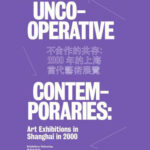 Uncooperative Contemporaries: Art Exhibitions in Shanghai in 2000, Afterall, 2020.
Uncooperative Contemporaries: Art Exhibitions in Shanghai in 2000, Afterall, 2020.
With essays by Jane DeBevoise, Lee Weng Choy, Mia Yu, Carol Yinghua Lu and Liu Ding; archival texts by Xu Hong and Zhou Zixi; reflections from participants such as Ai Weiwei, Chen Lingyang, Chen Yanyin, Feng Boyi, Hou Hanru, Li Liang, Li Xiangyang, Li Xu, Liang Shaoji, Xu Zhen, Yang Zhenzhong, Yang Zhichao, Zhang Qing, Zheng Shengtian and Zhu Yu, assembled by Anthony Yung; and an introduction by John Tain.
Shanghai’s ‘exhibition frenzy’ in 2000 presented conflicting positions at a transitional moment for ‘global’ contemporary art. This book explores what was at stake for modernity, contemporaneity, nationalism, internationalism and globalism in the city at the time, while looking back from diverse perspectives today. Landmark artist-led initiatives are analysed alongside the state-led Shanghai Biennale, then in its third edition, with the terrain further complicated by public interventions and commercial initiatives. What contrasting modes of public address were developed? How did visitors engage at the time, and how may we engage afresh now? And how might this moment in Shanghai index wider transformations of the art field? (From publisher website)
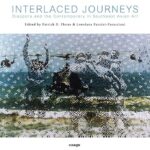 Patrick D. Flores and Loredana Pazzini-Parracciani, Interlaced Journeys: Diaspora and the Contemporary in Southeast Asian Art, Osage Publications, 2020.
Patrick D. Flores and Loredana Pazzini-Parracciani, Interlaced Journeys: Diaspora and the Contemporary in Southeast Asian Art, Osage Publications, 2020.
INTERLACED JOURNEYS|Diaspora and the Contemporary in Southeast Asian Art brings together the work of some of the most engaging art historians and curators from Southeast Asia and beyond that explores the notion of diaspora in contemporary visual culture. Regional attention on this particular condition of movement and resettlement has often been confined to sociological studies, while the place of diaspora in Southeast Asian contemporary art remains mostly unexplored. This is the first anthology to examine the subject from the complex perspective of artistic and curatorial practice as it attempts to propose multiple narratives of diaspora in relation to a range of articulations in the contemporary context. (From publisher website)
 David Teh et. al., Artist-to-Artists: Independent Art Festivals in Chiang Mai 1992–98,
David Teh et. al., Artist-to-Artists: Independent Art Festivals in Chiang Mai 1992–98,
Afterall Books, 2019
With main essays by David Teh, additional texts by Patrick D. Flores, May Adadol Ingawanij and Rosalind C. Morris, an introduction by Teh and David Morris and contributions from other writers and participating artists.
Founded on an ethos of friendship, and emerging amidst a regional constellation of artists’ initiatives and independent spaces, the series of festivals known as Chiang Mai Social Installation staged contemporary art within everyday city life. From temples and cemeteries to libraries, the town square, and even a dental clinic, these artist-led interventions present a self-funded, anarchic alternative to Southeast Asia’s subsequently expanding biennial culture while also marking the emergence of a wider contemporary moment. The first comprehensive publication on these projects, this book presents extensive photographic documentation alongside a multivocal account by its participants. David Teh’s main essay offers detailed contextualisation and analysis, and is complemented by contributions from Patrick D. Flores, May Adadol Ingawanij, Rosalind C. Morris and other writers and participating artists.
The Exhibition Histories series investigates exhibitions that have shaped the way contemporary art is experienced, made and discussed.
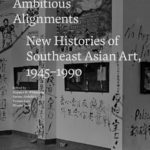 Ambitious Alignments: New Histories of Southeast Asian Art, 1945–1990
Ambitious Alignments: New Histories of Southeast Asian Art, 1945–1990
Edited by Stephen H. Whiteman, Sarena Abdullah , Yvonne Low and Phoebe Scott
This new volume, co-published by Power Publications and National Gallery Singapore, explores the art and architecture of Southeast Asia in the postwar period. Ten essays by emerging scholars draw upon unexplored archives and works of art, bearing witness to rich local histories and uncovering complex artistic exchanges across Cambodia, Indonesia, Hong Kong, Myanmar, the Philippines, Singapore, Thailand and beyond. The collection sheds new light on the significance of architecture, painting, installation, photography, and sculpture in the historical narratives of this period and offers fresh insights into artistic production and reception within the cultural and political contexts of postcolonialism and the Cold War, the legacies of which continue to shape the region today.
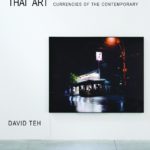 David Teh, Thai Art: Currencies of the Contemporary, NUS Press, 2017
David Teh, Thai Art: Currencies of the Contemporary, NUS Press, 2017
Since the 1990s, Thai contemporary art has achieved international recognition, circulating globally by way of biennials, museums, and commercial galleries. Many Thai artists have shed identification with their nation; but “Thainess” remains an interpretive crutch for understanding their work. In this book, the curator and critic David Teh examines the tension between the global and the local in Thai contemporary art. Writing the first serious study of Thai art since 1992, he describes the competing claims to contemporaneity, as staked in Thailand and on behalf of Thai art elsewhere. He shows how the values of the global art world are exchanged with local ones, how they do and don’t correspond, and how these discrepancies have been exploited. (from publisher’s website)
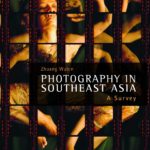 Zhuan Wubin, Photography in Southeast Asia: A Survey, NUS Press, 2016
Zhuan Wubin, Photography in Southeast Asia: A Survey, NUS Press, 2016
Photography in Southeast Asia: A Survey is a comprehensive attempt to map the emergence and trajectories of photographic practices in Southeast Asia. The narrative begins in the colonial era, at the point when the transfer of photographic technology occurred between visiting practitioners and local photographers. With individual chapters dedicated to the countries of Brunei, Cambodia, Indonesia, Laos, Malaysia, Myanmar, Singapore, Thailand, the Philippines and Vietnam, the bulk of the book spans the post-WWII era to the contemporary, focusing on practitioners who operate with agency and autonomy. The relationship between art and photography, which has been defined very narrowly over the decades, is re-examined in the process. Photography also offers an entry point into the cultural and social practices of the region, and a prism into the personal desires and creative decisions of its practitioners.(from publisher’s website)
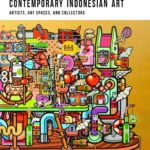 Yvonne Spielmann, Contemporary Indonesian Art: Artists, Art Spaces, and Collectors, NUS Pres, 2017
Yvonne Spielmann, Contemporary Indonesian Art: Artists, Art Spaces, and Collectors, NUS Pres, 2017
Indonesian art entered the global contemporary art world of independent curators, art fairs, and biennales in the 1990s. By the mid-2000s, Indonesian works were well-established on the Asian secondary art market, achieving record-breaking prices at auction houses in Singapore and Hong Kong. This comprehensive overview introduces Indonesian contemporary art in a fresh and stimulating manner, demonstrating how contemporary art breaks from colonial and post-colonial power structures, and grapples with issues of identity and nation-building in Indonesia. Across different media, in performance and installation, it amalgamates ethnic, cultural, and religious references in its visuals, and confidently brings together the traditional (batik, woodcut, dance, Javanese shadow puppet theater) with the contemporary (comics and manga, graffiti, advertising, pop culture).(from publisher’s website)
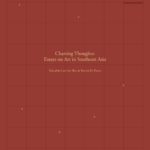 Charting Thoughts: Essays on Art in Southeast Asia, National Gallery, Singapore, 2017
Charting Thoughts: Essays on Art in Southeast Asia, National Gallery, Singapore, 2017
A constellation of thoughts by 25 established and emerging scholars who plot the indices of modernity and locate new coordinates within the shifting landscape of art. These newly commissioned essays are accompanied by close to 200 full-colour image plates.
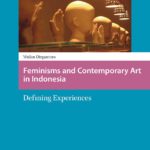 Wulan Dirgantoro, Feminisms and Contemporary Art in Indonesia, Amsterdam University Press, 2017
Wulan Dirgantoro, Feminisms and Contemporary Art in Indonesia, Amsterdam University Press, 2017
While Indonesian contemporary art is currently on the rise on the international art scene, there hasn’t yet been an in-depth study of the works of Indonesian women artists and the feminist strategies they employ within the art world. This book fills that gap, presenting the first comprehensive study of feminisms and contemporary arts in Indonesia, using feminist readings to analyze the works of Indonesian women artists historically and today, illuminating the sociocultural contexts in which they have worked and offering a nuanced understanding of local feminisms in the nation.(from University of Chicago Press website)
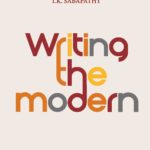 Writing the Modern: Selected Texts on Art & Art History in Singapore, Malaysia & Southeast Asia
Writing the Modern: Selected Texts on Art & Art History in Singapore, Malaysia & Southeast Asia
Edited by Ahmad Mashadi, Susie Lingham, Peter Schoppert and Joyce Toh
T.K. Sabapathy has been writing on the art of Southeast Asia for over four decades (1973–2015), as a critic, curator and art historian. This collection of his work, representing the scope and depth of Sabapathy’s output, and highlighting his most important and influential writings, is also a survey of the vast changes in the landscape of art in the region over the period. This publication provides an opportunity for more focused (re)reading, review and renewed consideration of T.K. Sabapathy’s rich body of work, to further fuel modern and contemporary art writing, research and exhibition-making.
(from publisher’s website)
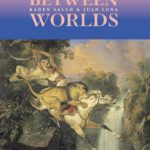 Between Worlds: Raden Saleh and Juan Luna exhibition catalogue (published by National Gallery, Singapore)
Between Worlds: Raden Saleh and Juan Luna exhibition catalogue (published by National Gallery, Singapore)
Explore the extraordinary life stories of two artists who are considered national heroes in their home countries––Indonesian painter Raden Saleh (c.1811–1880) and Filipino painter Juan Luna (1857–1899). Drawing from important collections around the world, this landmark exhibition brings together more than 80 of their works for the first time. Between Worlds takes you through significant chapters of each artist’s journey, uncovering parallels and differences in their experiences, from their emergence as artists in Java and the Philippines; to their subsequent training and participation in artistic and social circles in Europe; and their later return to Southeast Asia.
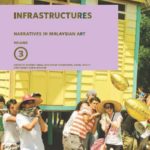 Narratives in Malaysian Art, Vol. 3: Infrastructures, Edited by Beverly Yong, Nur Hanim Khairuddin, Rahel Joseph and Tengku Sabri Ibrahim, Rogue Art, 2016
Narratives in Malaysian Art, Vol. 3: Infrastructures, Edited by Beverly Yong, Nur Hanim Khairuddin, Rahel Joseph and Tengku Sabri Ibrahim, Rogue Art, 2016
This third volume of the Narratives in Malaysian Art series, Infrastructures, examines the development of the structures that support art and art appreciation in Malaysia. Capturing some of the history of the art scene as it has grown over the decades, it also looks at the state of our infrastructure today, mapping the key areas of art institutions, artist-run initiatives, the art market, art education, and art writing and publication. Documenting roundtable sessions and conversations among art scene stakeholders, the volume also includes interviews, selected articles, commentary, maps, surveys and other data, providing valuable information and perspectives for cultural policy-makers and all who have a share and interest in Malaysia’s cultural life.
(Description from http://gbgerakbudaya.com)
 Caroline Turner and Jen Webb, Art and Human Rights: Contemporary Asian Contexts, Manchester University Press, 2016
Caroline Turner and Jen Webb, Art and Human Rights: Contemporary Asian Contexts, Manchester University Press, 2016
Contemporary Asian art has had a remarkable impact on global art practice, in addition to serving as a record of the region’s history from decolonisation to the present. Many Asian artists are deeply concerned about what it means to be human and to contribute to the development of a sustainable society, as well as having a sustained commitment to making art. This book, written at the start of the ‘Asian century’, focuses on the contexts and conditions which have helped to shape both art practice and postcolonial society in the region. One of the first surveys of contemporary Asian art, it uses case studies of key artists to discuss the work in relation to issues of human rights, social and environmental well-being and creativity. As such, it makes an important contribution to studies of contemporary Asian art and art history.
(Description from publisher’s website)
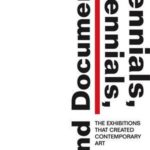 Anthony Gardner and Charles Green, Biennials, Triennials, and Documenta: The Exhibitions that Created Contemporary Art, Wiley-Blackwell, 2016
Anthony Gardner and Charles Green, Biennials, Triennials, and Documenta: The Exhibitions that Created Contemporary Art, Wiley-Blackwell, 2016
This innovative new history examines in-depth how the growing popularity of large-scale international survey exhibitions, or ‘biennials’, has influenced global contemporary art since the 1950s. It provides a comprehensive global history of biennialization from the rise of the European star-curator in the 1970s to the emergence of mega-exhibitions in Asia in the 1990s. It explores the evolving curatorial approaches to biennials, including analysis of the roles of sponsors,philanthropists and biennial directors and their re-shaping of the contemporary art scene.
(Description from publisher’s website)
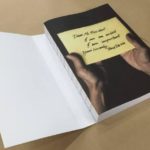 Histories, Prcatices, Interventions: A Reader in Singapore Contemporary Art, Edited by Jeffrey Say and Seng Yu Jin, Institute of Contemporary Art, 2016
Histories, Prcatices, Interventions: A Reader in Singapore Contemporary Art, Edited by Jeffrey Say and Seng Yu Jin, Institute of Contemporary Art, 2016
“This publication alters the landscape for writing on art in Singapore.” – TK Sabapathy
What are the ideas, practices, issues and institutions that have shaped our understanding of contemporary art in Singapore? Histories, Practices, Interventions: A Reader in Singapore Contemporary Art presents an anthology of writings on Singapore contemporary art since the 1970s. Editors Jeffrey Say and Seng Yu Jin have selected 33 wide-ranging essays by leading art historians, art critics, curators, artists, playwrights and academics. Comprising texts that reflect diverse writing styles and modes of expression—from personal narrative to theoretical texts to manifestos—this book is an essential resource for students, researchers and art lovers alike.
(Description from back cover)
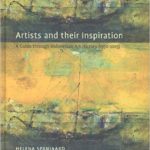 Helena Spanjaard, Artists and Their Inspiration: A Guide through Indonesian Art, 1930-2015, LM Publishers, 2016
Helena Spanjaard, Artists and Their Inspiration: A Guide through Indonesian Art, 1930-2015, LM Publishers, 2016
This book covers the development of modern and contemporary art, from the colonial period in the nineteen-thirties to the present time of globalization. Each chapter is based on important historical moments that changed the course of the art world. Special attention is paid to individual artists who invented new concepts, styles and techniques. The Indonesian art world is divided over several geographic centers that are far away from each other (Jakarta, Bandung, Yogyakarta and Bali). For an outsider, it is not that easy to discover the places where modern and contemporary art can be found. A special website will be added to the book in which more information is given about individual artists and places that can be visited (museums, galleries and cultural centers).
(Description from publisher’s website)
 Zhuang Wubin, Photography in Southeast Asia: A Survey, NUS Press, 2016
Zhuang Wubin, Photography in Southeast Asia: A Survey, NUS Press, 2016
Photography in Southeast Asia: A Survey is a comprehensive attempt to map the emergence and trajectories of photographic practices in Southeast Asia. The narrative begins in the colonial era, at the point when the transfer of photographic technology occurred between visiting practitioners and local photographers. With individual chapters dedicated to the countries of Brunei, Cambodia, Indonesia, Laos, Malaysia, Myanmar, Singapore, Thailand, The Philippines and Vietnam, the bulk of the book spans the post-WWII era to the contemporary, focusing on practitioners who operate with agency and autonomy. The relationship between art and photography, which has been defined very narrowly over the decades, is re-examined in the process. Photography also offers an entry point into the cultural and social practices of the region, and a prism into the personal desires and creative decisions of its practitioners.
(Description from publisher’s website)
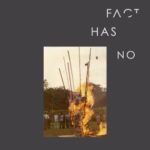 National Gallery Singapore, A Fact Has No Appearance, 2016
National Gallery Singapore, A Fact Has No Appearance, 2016
This publication is the catalogue for A Fact Has No Appearance: Art Beyond the Object which makes a nuanced exploration of the impact of new ideas on art in Southeast Asia during the 1970s through the case studies of three artists: Johnny Manahan (Philippines), Redza Piyadasa (Malaysia), and Tan Teng-Kee (Malaysia/Singapore), all of whom have been recognized for breaking new ground in Southeast Asia modern art. It features essays on each artist by the curators, as well as a rich images of the artists’ works, installation views and biographical information. (Description from publisher’s website)
 National Gallery Singapore, Between Declarations and Dreams: Art of Southeast Asia since the 19th Century, 2015
National Gallery Singapore, Between Declarations and Dreams: Art of Southeast Asia since the 19th Century, 2015
Years in the making, Between Declarations and Dreams is National Gallery Singapore’s inaugural exhibition of the art of Southeast Asia from the 19th century to the present. This handsome catalogue tracks the broad time periods and thematic sections of the exhibition with more than 300 artwork images. These are accompanied by essays that provide curatorial insight to a task as monumental and intricate as the positing an art history of a region as diverse as Southeast Asia. (Description from publisher’s website)
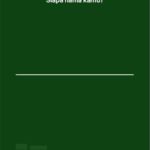 National Gallery Singapore, Siapa Nama Kamu: Art in Singapore since the 19th Century, 2015
National Gallery Singapore, Siapa Nama Kamu: Art in Singapore since the 19th Century, 2015
Published to accompany National Gallery Singapore’s inaugural exhibition Siapa Nama Kamu?, the catalogue stands on the shoulders of giants to present a survey of Singapore art from the 19th century to the present, charting major themes across broad time periods. Over 400 works of art in a wide range of media are brought together to trace the ebb and flow of the history of Singapore art. Curatorial essays provide insight into the exhibition making, as well as examine the geographical confines of Singapore, the parameters of national identity and margins of time. (Description from publisher’s website)
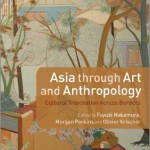
Fuyubi Nakamura, Morgan Perkins and Olivier Krischer (eds), Asia Through Art and Anthropology: Cultural Translation Across Borders, Bloomsbury Academic, 2013
How has Asia been imagined, represented and transferred both literally and visually across linguistic, geopolitical and cultural boundaries? This book explores the shifting roles of those who produce, critique and translate creative forms and practices, for which distinctions of geography, ethnicity, tradition and modernity have become fluid. Drawing on accounts of modern and contemporary art, film, literature, fashion and performance, it challenges established assumptions of the cultural products of Asia. With contributions from key scholars of Asian art and culture, including art historian John Clark and anthropologist Clare Harris, alongside fresh voices in the field, Asia Through Art and Anthropology will be essential reading for students and scholars of anthropology, art history, Asian studies, visual and cultural studies. (Description from Amazon.com)
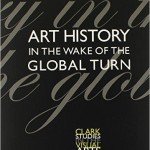
Aruna D’Souza and Jill Casid (eds), Art History in the Wake of the Global Turn (Clark Studies in the Visual Arts), Clark Art Institute, 2014.
With globalization steadily reshaping the cultural landscape, scholars have long called for a full-scale reassessment of art history’s largely Eurocentric framework. This collection of case studies and essays, the latest in the Clark Studies in the Visual Arts series, brings together voices from various disciplinary and theoretical backgrounds, each proposing ways to remap, decenter, and reorient what is often assumed to be a unified field. Rather than devise a one-size-fits-all strategy for what has long been a divided and disjointed terrain, these authors and artists reframe the inherent challenges of the global—most notably geographic, political, aesthetic, and linguistic differences—as productive starting points for study. As the book demonstrates, approaching art history from such alternative perspectives rewrites some of the most basic narratives, from the origins of representation to the beginnings of the “modern” to the very history of globalization and its effects. (Description from distributor Yale University Press website)
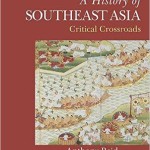
Anthony Reid, A History of Southeast Asia: Critical Crossroads, Wiley-Blackwell, 2015
A History of Southeast Asia: Critical Crossroads presents a comprehensive history of Southeast Asia from our earliest knowledge of its civilizations and religious patterns up to the present day.
- Incorporates environmental, social, economic, and gender issues to tell a multi-dimensional story of Southeast Asian history from earliest times to the present
- Argues that while the region remains a highly diverse mix of religions, ethnicities, and political systems, it demands more attention for how it manages such diversity while being receptive to new ideas and technologies
- Demonstrates how Southeast Asia can offer alternatives to state-centric models of history more broadly
(from publisher’s website)
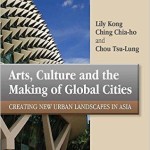 Lily Kong, Ching Chia-ho and Chou Tsu-Lung, Art, Culture and the Making of Global Cities: Creating New Urban Landscapes in Asia, Edward Elgar, 2015
Lily Kong, Ching Chia-ho and Chou Tsu-Lung, Art, Culture and the Making of Global Cities: Creating New Urban Landscapes in Asia, Edward Elgar, 2015
While global cities have mostly been characterized as sites of intensive and extensive economic activity, the quest for global city status also increasingly rests on the creative production and consumption of culture and the arts. Arts, Culture and the Making of Global Cities examines such ambitions and projects undertaken in five major cities in Asia: Beijing, Shanghai, Hong Kong, Taipei and Singapore. Providing a thorough comparison of their urban imaging strategies and attempts to harness arts and culture, as well as more organically evolved arts activities and spaces, this book analyses the relative successes and failures of these cities. Offering rich ethnographic detail drawn from extensive fieldwork, the authors challenge city strategies and existing urban theories about cultural and creative clusters and reveal the many complexities in the art of city-making. (Description from publisher’s website)
Also available as an e-book
 Michelle Antoinette, Reworlding Art History: Encounters with Contemporary Southeast Asian Art after 1990, Brill, 2015
Michelle Antoinette, Reworlding Art History: Encounters with Contemporary Southeast Asian Art after 1990, Brill, 2015
Reworlding Art History highlights the significance of contemporary Southeast Asian art and artists, and their place in the globalized art world and the internationalizing field of ‘contemporary art’. Traced here are significant exhibitions that featured contemporary Southeast Asian art and brought it to regional and international attention. Examined are seminal foundational art histories, and dominant methods and thematic frameworks for engaging with Southeast Asian art. Key artists, exhibitions, collections, scholarship, ideologies, and discourses shaping its developing history are discussed, as are major works by artists associated with Indonesia, Malaysia, the Philippines, and Singapore. Richly illustrated and incorporating cross-cultural and interdisciplinary methods, Reworlding Art History is a foundational reference work for those interested in Southeast Asia’s contemporary art, including scholars of art history, Asian studies, curatorship, museology, visual culture, and anthropology, as well as professionals working in art and museum contexts (Description from publisher’s website)
Also available as an e-book.
 Michelle Antoinette and Caroline Turner (ed), Contemporary Asian Art and Exhibitions, ANU Press, 2014
Michelle Antoinette and Caroline Turner (ed), Contemporary Asian Art and Exhibitions, ANU Press, 2014
This volume draws together essays by leading art experts observing the dramatic developments in Asian art and exhibitions in the last two decades. The authors explore new regional and global connections and new ways of understanding contemporary Asian art in the twenty-first century. The essays coalesce around four key themes: world-making; intra-Asian regional connections; art’s affective capacity in cross-cultural engagement; and Australia’s cultural connections with Asia. In exploring these themes, the essays adopt a diversity of approaches and encompass art history, art theory, visual culture and museum studies, as well as curatorial and artistic practice. Richly illustrated with artworks by leading contemporary Asian artists, Contemporary Asian Art and Exhibitions: Connectivities and World-making will be essential reading for those interested in recent developments in contemporary Asian art, including students and scholars of art history, Asian studies, museum studies, visual and cultural studies. (Description from publisher’s website)
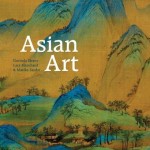 Dorinda Neave (ed) et al., Asian Art, Pearson, 2014
Dorinda Neave (ed) et al., Asian Art, Pearson, 2014
Illuminates the rich history of Asian Art from ancient times to the present
Asian Art provides students with an accessible introduction to the history of Asian Art. Students will gain an understanding of the emergence and evolution of Asian art in all its diversity. Using a range of analytical skills, readers will learn to recognize patterns of continuity and change between the arts and cultures of various regions comprising Asia. Images set within their broader cultural and religious backgrounds provides students with important contextual information to understand and decode artworks. (description from publisher’s website)
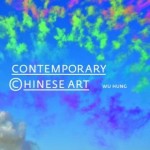 Wu Hung, Contemporary Chinese Art, Thames and Hudson, 2014
Wu Hung, Contemporary Chinese Art, Thames and Hudson, 2014
From its underground genesis during the Cultural Revolution (1966–76), contemporary Chinese art has become a dynamic and hugely influential force in a globalized art world. In this first major introduction to the topic, Wu Hung provides an accessible, focused, and much-needed narrative of the development of Chinese art across all media from the 1970s to the 2000s, a time span characterized by radical social, political, and economic change in China. The book is a richly illustrated and easy-to-navigate chronological survey that considers contemporary Chinese art both in the context of China’s history and in a global arena. Wu Hung explores the emergence of contemporary art—as opposed to officially sanctioned art—in the public sphere after the Cultural Revolution; the mobilization by young artists and critics of a nationwide avant-garde movement in the mid-1980s; the re-emphasis on individual creativity in the late 1980s and the heightened spirit of experimentation of the 1990s; and the more recent identification of Chinese artists, such as Ai Weiwei, as global citizens who create works for an international audience. (Description from publisher’s website)
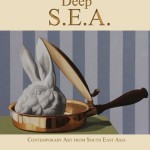 Deep S.E.A. exhibition catalogue, Damiani, 2013
Deep S.E.A. exhibition catalogue, Damiani, 2013
Playing with the semantic meaning ambivalence, the exhibition title revolve around the word “S.E.A.”, all the while acronym of South East Asia and cross-reference to the common geo-physical element of the sea, the only shared border among ASEAN countries: except for Laos, indeed, all the countries shores producing exhibited artists are lapped by the Pacific Ocean. Furthermore, water courses and streams are of strategic importance in the economical and social development of S.E.A. nations, with specific reference to the Myanmar case, as we will examine. Artworks made by 11 artists from 8 countries and introduced by 11 critic essays constitute the visual support of this far away coming story, telling of identity and memory, hope and trauma, religion and oppression, emotional and concrete diaspora, swinging between nationalism and globalism, happening to gravitate around the unavoidable orbit of regionalism. (Description from publisher’s website)
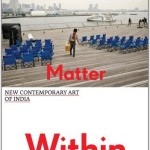 The Matter Within: New Contemporary Art of India, Yerba Buena Center for the Arts, 2013
The Matter Within: New Contemporary Art of India, Yerba Buena Center for the Arts, 2013
As contemporary art in India becomes more widely recognized within the country, there has also been a growing awareness of its growth and impact internationally. The Matter Within: New Contemporary Art of India surveys sculpture, photography and video by Indian artists living inside the country as well as outside it. Inspired by material culture, literature, spirituality and social and political aspects of the history of the South Asian region, the volume is organized around three thematic threads that resonate from contemporary India: embodiment, the politics of communicative bodies and the imaginary. (Description from Amazon.com)
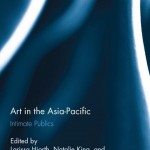 Larissa Hjorth (ed) et al, Art in the Asia-Pacific: Intimate Publics
Larissa Hjorth (ed) et al, Art in the Asia-Pacific: Intimate Publics
As social, locative, and mobile media render the intimate public and the public intimate, this volume interrogates how this phenomenon impacts art practice and politics. Contributors bring together the worlds of art and media culture to rethink their intersections in light of participatory social media. By focusing upon the Asia-Pacific region, they seek to examine how regionalism and locality affect global circuits of culture. The book also offers a set of theoretical frameworks and methodological paradigms for thinking about contemporary art practice more generally. (Description from publisher’s website)
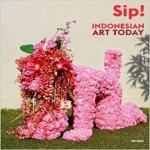 Matthias Arndt, Sip! Indonesian Art Today: Seni Rupa Indonesia Kini
Matthias Arndt, Sip! Indonesian Art Today: Seni Rupa Indonesia Kini
Indonesia is one of the countries where exciting art is still waiting to be discovered. Over the past ten years, a growing number of group exhibitions and survey shows have presented Indonesian art. What has been sorely lacking is a book about the country’s best-known artists. “Sip!–Indonesian Art Today” introduces readers to 16 established and young artists, presenting each of them with recent works. Farah Wardani, director of the Indonesian Visual Art Archive, Yogyakarta, has compiled brief texts shedding light on the artist’s conceptions. Biographical information, exhibition histories, bibliographies, and portraits of the artists complement the illustrations. The curator Enin Supriyanto, a leading expert on the Indonesian art scene, has contributed an essay examining the most recent developments in Indonesian art, tying them back to the art history of the past forty years and mapping them to the transformations in Indonesian society and politics during the same period. A timeline extending from the 1970s to the present additionally visualizes the most important moments in art, in Indonesia and abroad, making the book an indispensable compendium for collectors and curators, students of art and everyone who is interested. (Description from Amazon.com)
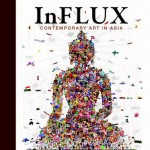 Parul Dave Mukherji (ed) et al, InFlux: Contemporary Art in Asia
Parul Dave Mukherji (ed) et al, InFlux: Contemporary Art in Asia
InFlux: Contemporary Art in Asia brings together essays by leading critics and curators to examine modern and contemporary art practice and its discourses in Asia. Covering diverse regions spanning China, India, Thailand, Iran, West Asia, Pakistan, Kazakhstan, Hong Kong, Tibet, and Cambodia, the book examines their multiple modernities and the arrival of many Asia upon the contemporary art scene.
Some centers have become celebrated in the international exhibition circuit and the art market, but there is also an Asia beyond their ambit, and the book throws light upon major and minor, established and emergent geographies of art. Asia’s own internal minorities fracture any unified sense of place, and representing this diversity has become a major challenge for today’s curator.
What is the impact on contemporary art of state power and burgeoning economies, or the persistent stereotypes of Asian craftsmanship, exoticism, and religiosity or the new ones of terrorism and tourist paradise? The book aims to challenge some of these perceptions by viewing modern and contemporary Asian art not as a given field but as a project in flux, constantly under revision via art practice and curatorial interventions.
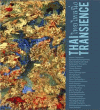 Thai Transience by Apinan Poshyananda et al.
Thai Transience by Apinan Poshyananda et al.
Thai Transience showcases paintings, sculptures, photographs, installations and videos by leading Thai artists. Inspiration behind these pieces are drawn from traditional artefacts and art objects from local museums and religious sites within Thailand, showing how Thai contemporary artists continue to create new expressions responding to their heritage and faith. This exhibition catalogue offers a unique perspective of Thai art-making that traverses the categories of traditional, modern and contemporary art, from both emerging and senior Thai contemporary artists such as Apichatpong Weerasethakul, Araya Rasdjarmrearnsook, Bussaraporn Thongchai, Chokchai Tukpoe, Chusak Srikwan, Dow Wasiksiri, Imhathai Suwatthanasilp, Kamin Lertchaiprasert, Panya Vijinthanasarn, Phatyos Buddhacharoen, Rikrit Tiravanija, Thawan Duchanee and Yuree Kensaku. A suitable publication for both researchers and art lovers, Thai Transience is also an ideal reference tool for exploring the art of Southeast Asia (from the Back Cover)
 The Art of Modern China by Julia F. Andrews and Kuiyi Shen
The Art of Modern China by Julia F. Andrews and Kuiyi Shen
In the early twenty-first century, China occupies a place on center stage in the international art world. But what does it mean to be a Chinese artist in the modern age? This first comprehensive study of modern Chinese art history traces its evolution chronologically and thematically from the Age of Imperialism to the present day. Julia Andrews and Kuiyi Shen pay particular attention to the dynamic tension between modernity and tradition, as well as the interplay of global cosmopolitanism and cultural nationalism. This lively, accessible, and beautifully illustrated text will serve and enlighten scholars, students, collectors, and anyone with an interest in Asian art and artists (from Amazon.com Website)
“The Art of Modern China is a long-awaited, much-needed survey. The authors’ combined experience in this field is exceptional. In addition to presenting key arguments for students and arts professionals, Andrews and Shen enliven modern Chinese art for all readers. The Art of Modern China gives just treatment to an expanded field of overlooked artworks that confront the challenges of modernization.” – De-nin Deanna Lee, author of The Night Banquet: A Chinese Scroll through Time. (from the Inside Flap)
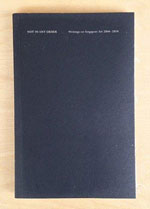 Not In Any Order: Writings on Singapore Art 2006-2010 by Lim Kok Boon
Not In Any Order: Writings on Singapore Art 2006-2010 by Lim Kok Boon
Not In Any Order: Writings on Singapore Art 2006-2010 is an anthology of artist, educator and art critic Lim Kok Boon’s writings on the Singaporean visual art scene. The book features thoughtful, insightful and not uncritical reviews of 80 exhibitions which are grouped into four themes, namely, “Modernity Then And Now”, “Consuming Selves”, “Relaism, reality” and “Packaging New Waves”. Each theme is accompanied by an essay which sets the context for the reviewed exhibitions. The book covers exhibitions which are now seen as ground-breaking, such as “Telah Terbit” (Out Now): Southeast Asian Contemporary Art and it has a good mix of different art forms that show the diversity of art practices here. The book ends with a personal musing on the role of an art critic. Given the paucity of writings on Singaporean art, this publication serves as an important documentation of the history of exhibitions in Singapore and, consequently, its art history.
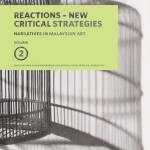 Narratives in Malaysian Art, Vol. 2: Reactions – New Critical Strategies. Edited by Nur Hanim Khairuddin and Beverly Yong with T.K. Sabapath
Narratives in Malaysian Art, Vol. 2: Reactions – New Critical Strategies. Edited by Nur Hanim Khairuddin and Beverly Yong with T.K. Sabapath
Narratives in Malaysian Art Volume 2: Reactions – New Critical Strategies looks at the ways in which Malaysian artists have responded to socio-political events that have taken place in Malaysia, and also at the changing approaches and attitudes in art-making over the past 45 years. Featuring leading critical voices in Malaysian art from the 70s to the 90s, to those of a younger generation of artists, writers and researchers, this volume captures something of the underlying urgency and passion that have informed the development of contemporary Malaysian art and artistic practice. Contained within this volume are polemical tracts by artists and art groups, existing and newly commissioned essays, as well as interviews with artists, and excerpts from seminal exhibition texts.The volume is also illustrated with black-and-white and colour documentation of over 100 art works and events (Description from Select Books website).
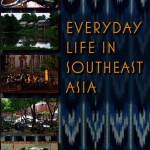 Everyday Life in Southeast Asia. Edited by Kathleen Adams and Kathleen Gillogly
Everyday Life in Southeast Asia. Edited by Kathleen Adams and Kathleen Gillogly
This lively survey of the peoples, cultures, and societies of Southeast Asia introduces a region of tremendous geographic, linguistic, historical, and religious diversity. Encompassing both mainland and island countries, these engaging essays describe personhood and identity, family and household organization, nation-states, religion, popular culture and the arts, the legacies of war and recovery, globalization, and the environment. Throughout, the focus is on the daily lives and experiences of ordinary people. Most of the essays are original to this volume, while a few are widely taught classics. All were chosen for their timeliness and interest, and are ideally suited for the classroom (Description from Amazon.com).
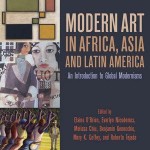 Modern Art in Africa, Asia and Latin America: An Introduction to Global Modernisms. Edited by Elaine O’Brien et. al.
Modern Art in Africa, Asia and Latin America: An Introduction to Global Modernisms. Edited by Elaine O’Brien et. al.
Shedding fresh light on the influence of modern art beyond the West, this timely anthology provides a much-needed corrective to the Eurocentric historiography of modern art, redefining it as a global rather than purely Western phenomenon and offering a more worldly and expanded view than any existing modern art survey. Divided in to three sections focusing on the geographic areas that have often been left out of conversations around modernity, the volume brings together a selection of major essays and historical documents addressing not only painting and sculpture but photography, film and architecture as well. Section introductions, critical essays, and documents provide the relevant contextual material, link each narrative to other art histories in the book, supply essential background information, and guide the reader through the key theoretical positions and debates. Bringing together narratives of modern art that have been scattered in area studies of Asian, African, and Latin American art history, the volume tells a more accurate story of the radical transformation associated with modernity worldwide and opens the subject up to cross-cultural comparison. Modern Art in Africa, Asia and Latin America also addresses often-neglected topics in modern art that are especially relevant to the study of postmodernity, such as modern art in diaspora, colonial art education and institutions, and pre-histories of new media, concepts, and methods. This is a useful tool for all students and scholars of non-Western modernisms which will encourage a deeper engagement with, and understanding of, modern art as a global phenomenon (From the back cover of book)
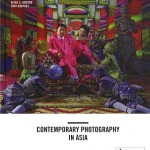 Contemporary Photography in Asia by Keiko Hooton and Tony Godfrey
Contemporary Photography in Asia by Keiko Hooton and Tony Godfrey
Filled with luminous photographs from the best practitioners working today, this unique collection contextualizes contemporary Asian photography against the backdrop of massive cultural, social, and political changes in the region. Global expansion and growing local economies have allowed the obsession with photography to sweep the Asian continent. Japan was the first in the region to fall in love with photography; most Western readers are already familiar with names such as Araki. Rinko Kawauchi’s recent nomination for the Deutsche Börse prize has sparked huge international interest in Asia’s most popular art form. Now, South Korea, China, and Southeast Asia are also emerging as powerhouses in the photographic realm. This beautiful, up-to-date volume documents the growing culture of photography as an art form in Asia, including often overlooked countries such as Indonesia, the Philippines, Malaysia, Thailand, Cambodia, Vietnam, Taiwan, and Singapore. The book features short essays on the status of photography by region and introduces each artist through spreads of their work, a short biography, and a personal statement given exclusively for this unique book. The stunning images speak volumes about one of the most exciting developments in contemporary photography. (description from publisher’s website)
 Terms and Conditions
Terms and Conditions
The catalogue of the exhibition “Terms and Conditions”, which featured the works of artists from the Arab world, provides a nuanced glimpse into the exhibition and its artists with write-ups, interviews and essays. Offering insight into the layered themes of the show, the catalogue examines the relationships between power, control and representation, highlighting how power impacts perceptions of identity, location, history and memory with a focus on The Arab world (adapted from the Singapore Art Museum website)
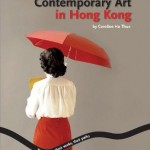 Contemporary Art in Hong Kong by Caroline Ha Thuc
Contemporary Art in Hong Kong by Caroline Ha Thuc
The last decade has seen Hong Kong blossom into one of Asia’s true artistic hotspots, with its galleries, art projects and fairs now flourishing along with local and international audiences. At the centre of this cultural renaissance are the artists themselves – working as both products and interpreters of Hong Kong’s complex historical legacy. Though often finding themselves at odds with society’s values, they have developed a wholly unique genre of art that acts as a vital bridge between a place and its people. The artist interviews in Contemporary Art in Hong Kong expose the countless links between history, culture and identity as well as Ha Thuc’s conviction that art not only reflects society, but can also mould it. (Description from Select Books website)
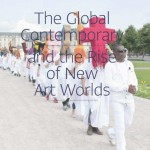 The Global Contemporary and the Rise of New Art Worlds. Edited by Hans Belting, Andrea Buddensieg and Peter Weibel
The Global Contemporary and the Rise of New Art Worlds. Edited by Hans Belting, Andrea Buddensieg and Peter Weibel
The geography of the visual arts changed with the end of the Cold War. Contemporary art was no longer defined, exhibited, interpreted, and acquired according to a blueprint drawn up in New York, London, Paris, or Berlin. The art world distributed itself into art worlds. With the emergence of new art scenes in Asia and the Middle East and the explosion of biennials, the visual arts have become globalized as surely as the world economy has. This book offers a new map of contemporary art’s new worlds. The Global Contemporary and the Rise of New Art Worlds documents the globalization of the visual arts and the rise of the contemporary over the last twenty years. Lavishly illustrated, with color throughout, it tracks developments ranging from exhibition histories and the rise of new art spaces to art’s branding in such emerging markets as Hong Kong and the Gulf States. Essays treat such subjects as curating after the global turn; art and the migration of pictures; the end of the canon; and new strategies of representation. (Description from The MIT Press website)
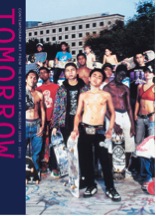 Tomorrow, Today: Contemporary Art from the Singapore Art Museum (2009-2011)
Tomorrow, Today: Contemporary Art from the Singapore Art Museum (2009-2011)
Tomorrow, Today: Contemporary Art from the Singapore Art Museum (2009-2011) is a must-read guide to SAM’s contemporary art collection. The works featured were brought into the collection from 2009 to 2011, following SAM’s transformation into a contemporary art museum. There are over 300 fully illustrated artworks, including significant and iconic pieces from emerging artists and senior art practitioners from the Southeast Asian region, as well as China, India and Japan. This guide is an accessible resource for all artists, curators, critics, writers and art lovers interested in the region and Asia’s contemporary art scene. (Description from publisher’s website)
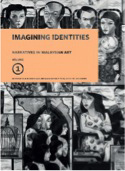 Narratives in Malaysian Art, Vol. 1: Imagining Identities. Edited by Nur Hanim Khairuddin and Beverly Yong with T.K. Sabapathy
Narratives in Malaysian Art, Vol. 1: Imagining Identities. Edited by Nur Hanim Khairuddin and Beverly Yong with T.K. Sabapathy
The first of four volumes, Narratives in Malaysian Art Volume I: Imagining Identities brings together a collection of essays that looks at the many ways in which art has provided artists with the means of imagining themselves, and imagining Malaysia. Writing from different times and contexts, the 19 essays in this publication comprises 5 republished essays written between the 1970s to1990s and new commissioned essays by writers and artists that range across generations and groups. This publication includes 50 years of Malaysian art, a visual summary of the Malaysian art through the decades and a timeline chart of key art and historical events. (Description from Select Books website)
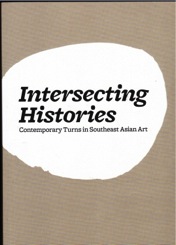 Intersecting Histories: Contemporary Turns in Southeast Asian Art is a book that is published in conjunction with an exhibition of the same name held at the Nanyang Technological University Gallery from September to November 2012. It contains five critical essays by T.K. Sabapathy, Yvonne Low, Seng Yu Jin, Aminudin T H Siregar and Adele Tan. The book addresses issues relating to the contemporary and contemporaneity in Southeast Asian Art and also provides critical insights into Southeast Asian artists and works of art.
Intersecting Histories: Contemporary Turns in Southeast Asian Art is a book that is published in conjunction with an exhibition of the same name held at the Nanyang Technological University Gallery from September to November 2012. It contains five critical essays by T.K. Sabapathy, Yvonne Low, Seng Yu Jin, Aminudin T H Siregar and Adele Tan. The book addresses issues relating to the contemporary and contemporaneity in Southeast Asian Art and also provides critical insights into Southeast Asian artists and works of art.
 Modern and Contemporary Southeast Asian Art: An Anthology. Edited by Nora Taylor and Boreth Ly
Modern and Contemporary Southeast Asian Art: An Anthology. Edited by Nora Taylor and Boreth Ly
This anthology explores artistic practices and works from a diverse and vibrant region. Scholars, critics, and curators offer their perspectives on Southeast Asian art and artists, aiming not to define the field but to Illuminate its changing nature and Its Interactions with creative endeavors and histories originating elsewhere. These essays examine a range of new and modern work, from sculptures that Invoke post-conflict trauma In Cambodia to Thai art Installations that Invite audience participation and thereby challenge traditional definitions of the “art obJect.” In this way, the authors not only provide a lively stUdy of regional art, but challenge and expand broad debates about international and transnational art. (Description from publisher’s website)
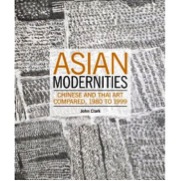 Asian Modernities: Chinese and Thai Art Compared, 1980 to 1999 by John Clark
Asian Modernities: Chinese and Thai Art Compared, 1980 to 1999 by John Clark
Asian Modernities is a groundbreaking comparison of two contemporary Asian art cultures. This is the first analysis that defines a space for Asian modernity without direct reference to Euramerica. Based on John Clark’s extensive primary research using vernacular written and interview materials in Chinese and Thai, Asian Modernities also develops theoretical perspectives on genealogies of modernity, and the twin phenomena of globalisation and transnational artistic identity. This highly illustrated book combines institutional examination with a close attention to art works and to the way artists have positioned themselves through them at home and abroad. (Description from Amazon.com)
 Contemporary Art in Asia: A Critical Reader. Cambridge, Mass: The MIT Press, 2011. Edited by Melissa Chiu and Benjamin Gennochio,
Contemporary Art in Asia: A Critical Reader. Cambridge, Mass: The MIT Press, 2011. Edited by Melissa Chiu and Benjamin Gennochio,
In 2008, Asia stormed the citadel of the New York art world when two major museums presented retrospectives of Asian contemporary artists: Cai Guo-Qiang at the Guggenheim Museum and Takashi Murakami at the Brooklyn Museum. Meanwhile, in Hong Kong, a painting by Zeng Fanzhi sold for $9.5 million, setting a new world auction record for Chinese contemporary art. The Western art world is still coming to grips with the challenge: it is all about Asia now. This book is the first anthology of critical writings to map the shift in both the nature and the reception of Asian art over the past twenty years. Offering texts by leading figures in the field (mostly Asian), and including more than fifty illustrations in color and black and white, it covers developments in East Asia (including China, Korea, and Japan), South Asia (including India and Pakistan), and Southeast Asia (including Vietnam, Indonesia, and Thailand). Together, the twenty-three textsposit a historical and pan-Asian response to the question, “What is Asian contemporary art?” Considering such topics as Asian modernism (“productive mistranslation” of the European original), Asian cubism, and the curating, collecting, and criticism of Asian contemporary art, this book promises to be a foundational reference for many years to come. (Description from publisher’s website)
 Hybrid Culture: Japanese Media Arts in Dialogue with the West by Yvonne Spielmann
Hybrid Culture: Japanese Media Arts in Dialogue with the West by Yvonne Spielmann
This book grew out of Yvonne Spielmann’s 2005–2006 and 2009 visits to Japan, where she explored the technological and aesthetic origins of Japanese new-media art–which was known for pioneering interactive and virtual media applications in the 1990s. Spielmann discovered an essential hybridity in Japan’s media culture: an internal hybridity, a mixture of digital-analog connections together with a non-Western development of modernity separate from but not immune to Western media aesthetics; and external hybridity, produced by the international, transcultural travel of aesthetic concepts.
Spielmann describes the innovative technology context in Japan, in which developers, engineers, and artists collaborate, and traces the Japanese fondness for precision and functionality to the poetics of unobtrusiveness and detail. She examines work by artists including Masaki Fujihata, whose art is both formally and thematically hybrid; Seiko Mikami and Sota Ichikawa, who build special devices for a new sense of human-machine interaction; Toshio Iwai, who connects traditional media forms with computing; and Tatsuo Miyajima, who anchors his LED artwork in Buddhist philosophy. Spielmann views hybridity as a positive aesthetic value–perhaps the defining aesthetic of a global culture. Hybridity offers a conceptual approach for considering the ambivalent linkages of contradictory elements; its dynamic and fluid characteristics are neither conclusive nor categorical but are meant to stimulate fusions. (Description from the publisher’s website)
Professor Yvonne Spielmann is the Dean of the Faculty of Fine Arts at LASALLE College of the Arts, singapore
 Contemporary Art: World Currents by Terry Smith
Contemporary Art: World Currents by Terry Smith
Author Terry Smith argues that, in recent decades, a global shift from modern to contemporary art has occurred: artists everywhere have embraced the contemporary world’s teeming multiplicity, its proliferating differences and its challenging complexities and new technologies. Alongside more than 350 carefully selected color images of key works, Terry Smith offers the first account of these changes, from their historical beginnings to the present day. Exploring key works by both well known and little-known artists, the author shows how contemporary art achieved definitive force in the markets and museums of the major art centres during the 1980s and then became a global phenomenon as artworlds everywhere began to connect more closely: new communicative technologies and expanding social media are now shaping the future of art. Contemporary Art: World Currents breaks new ground in tracing how modern, traditional and indigenous art became contemporary in each cultural region of the world, ranging across Western, East and Central Europe, North and South America and the Caribbean, Oceania, Africa, and the Middle East. Terry Smith lays the groundwork for a new comparative approach to contemporary art, emphasizing its relationships to all aspects of contemporary life. He argues that it is cultural diversity and individual artistic inventiveness, not a convergence towards sameness, which makes today’s art contemporary. (Description from Amazon.com)

